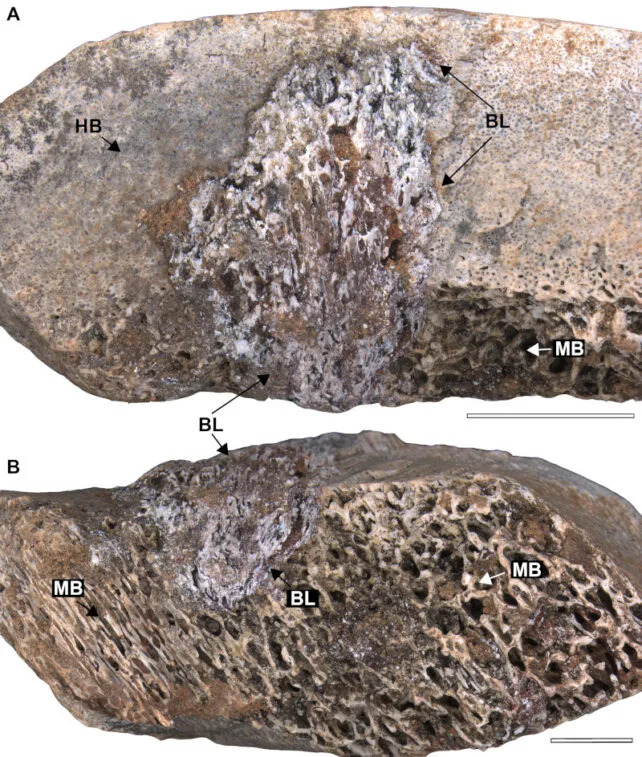Dinosaur life wasn’t all peaches and cream earlier than the Chicxulub asteroid struck Earth. Some have been suffering from a lot smaller risks lengthy earlier than.
A brand new research has discovered proof {that a} probably lethal bone illness endangered the lives of quite a few long-necked dinosaurs in what’s now Brazil, roughly 80 million years in the past.
These are a few of South America’s largest dinosaurs, and but they confronted a really tiny enemy.
Associated: Scientists Discovered Most cancers in a Dinosaur – And It Would possibly Assist Save Human Lives
Scientists have now described the traditional skeletons of six sauropods from Brazil that include indicators of osteomyelitis – a harmful bone an infection brought on by a bacterium, fungus, virus, or parasite.
At present, the an infection impacts mammals, birds, and reptiles.
Through the Cretaceous, it could have killed dinosaurs. The traditional dwelling of sauropods in Brazil would have as soon as hosted a community of shallow, slow-moving rivers and huge swimming pools of standing water – ripe for pathogens and the creatures that carry them.
For higher or worse, sauropods appear to have most well-liked these moist ecosystems. Their footprints and different fossils are sometimes present in historical floodplains or swamps.
YouTube Thumbnail
“There have been few findings of infectious ailments in sauropods, the primary having been printed lately,” says lead writer and paleontologist Tito Aureliano from the Regional College of Cariri (URCA) in Brazil.
“The bones we analyzed are very shut to one another in time and from the identical palaeontological website, which means that the area offered situations for pathogens to contaminate many people throughout that interval.”
The dear fossils of unspecified species have been collected between 2006 and 2023 on the “Vaca Morta” website within the Brazilian state of Sao Paulo.
As a result of not one of the bone lesions present proof of therapeutic, the infections have been in all probability nonetheless lively on the time of dying. They might even have contributed.
Primarily based on the illness pathology, Aureliano and colleagues argue that the bone an infection superior shortly. Not like dinosaur chew marks, the bone lesions possess a “chaotic structure”.
Some sauropod bones solely include lesions on the within, whereas others with extra superior infections present round bump-like protrusions on the surface. The findings counsel that the illness can progress in several methods, perhaps relying on the dinosaur or the kind of pathogen concerned.
Dinosaurs could have as soon as dominated the Earth, however even the tiniest pathogens could have threatened their reign.
The research was printed in The Anatomical Report.


